No input
Being a scripted conversation that the visitor could not take control of, the inputs would need to reflect the information requested and only show when necessary.
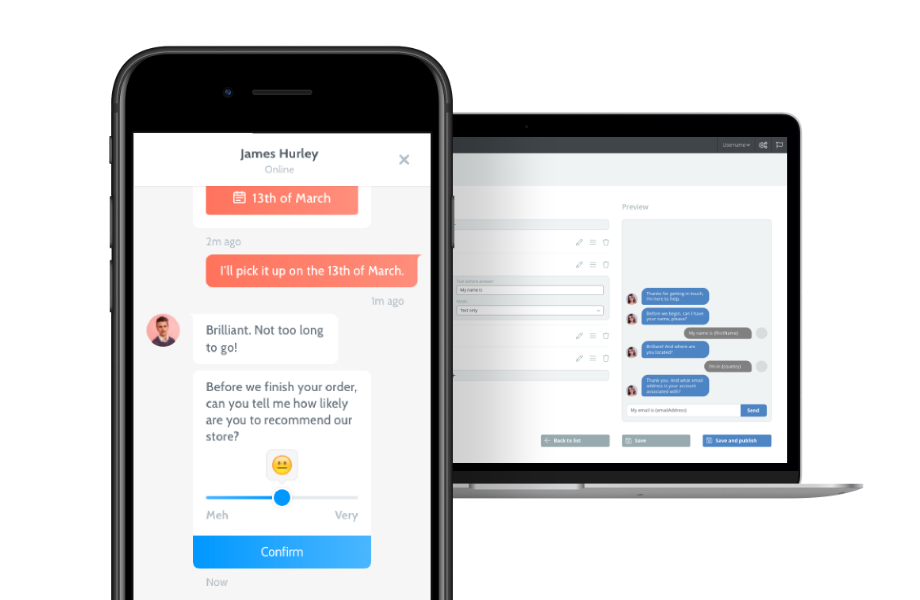
In the second half of 2015, after a successful product launch, we looked to expand the suite with one feature that would turn out to be the single most important tools in the SMARKIO toolset: the automated chat.
Developers at Adclick had played with the idea of automated chat — a few bespoke instances had made it to production and were a major success, increasing conversion rates significantly. So we set out to build a fully customisable and user-friendly version of the same system.
The majority of the SMARKIO toolset started out as tools developed for internal use at Adclick, its sister company. Read more about it here.
We framed this project around the Marketing Executive persona, who typically planned and set up the marketing campaigns.
Using the Jobs to Be Done framework, we arrived at the following goal:
As a Marketing Executive, I want to be able to design an automated chat experience in order to increase engagement and diversify my marketing campaigns.
During discovery, we met with people that had shown interest in the feature, as well as people who had been using the bespoke tool at Adclick. Our main goal was to find out the information we needed to collect (or types of fields, if you will).
Note: the chat interface shown is a visual overhaul (with no functional changes) done by an external agency in 2016. My initial interface was done directly in CSS and is unfortunately now lost to time.
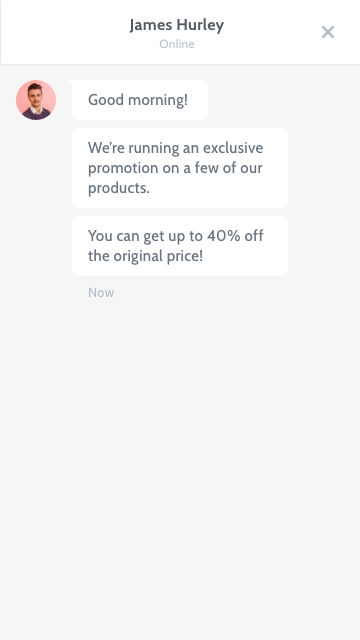
Being a scripted conversation that the visitor could not take control of, the inputs would need to reflect the information requested and only show when necessary.
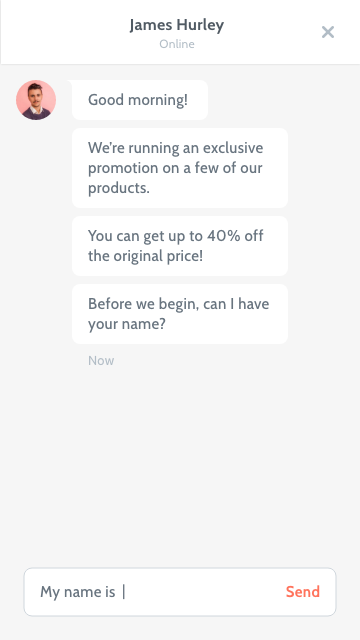
When asking for an open-ended question, we could suggest the length by showing a big or small box. Additionally, we allowed users to add prefixes and suffixes to the input to steer the conversation better.
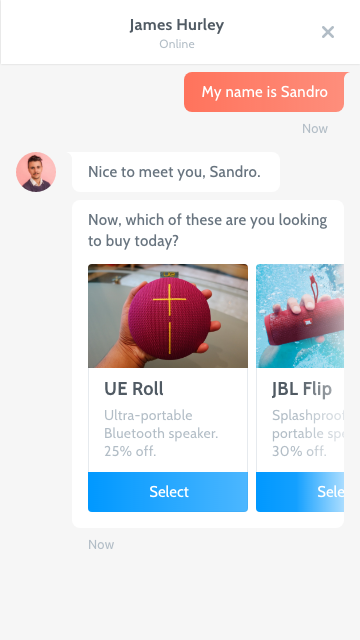
We needed to allow users to offer options in a very flexible way. In the end, we offered single or multiple choice options in the form of a list or of a stack of cards.
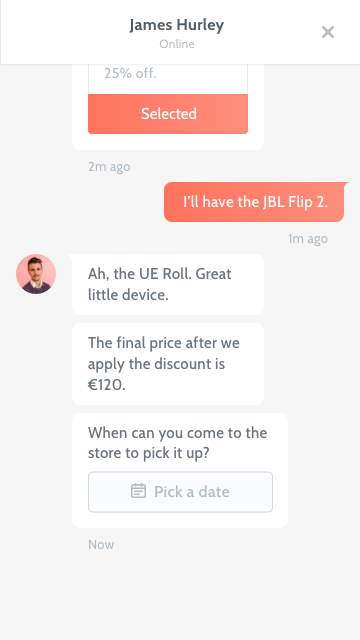
Date and time also needed a fair amount of flexibility, like the ability to select only within a specific range. A few users used this to verify that their visitors were of a certain age, for instance.
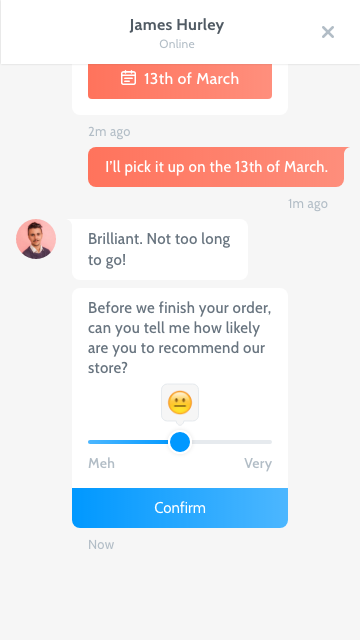
Sliders were introduced as a customer request for customer feedback collection.
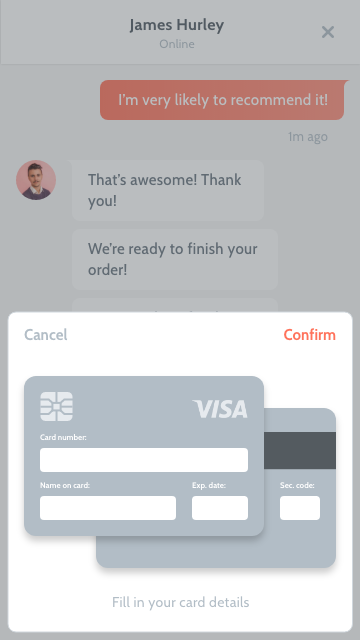
An addition made in 2016, payments were one of the last features added to the chats during my tenure at the company, and allowed users to process payments through the automated chats, opening the doors for selling goods and services through this feature.
With all these powerful and flexible features, it was important to give our users an easy way to configure their automated chats. We used a simple system of actions that the users could add to their script and configure by expanding their settings.
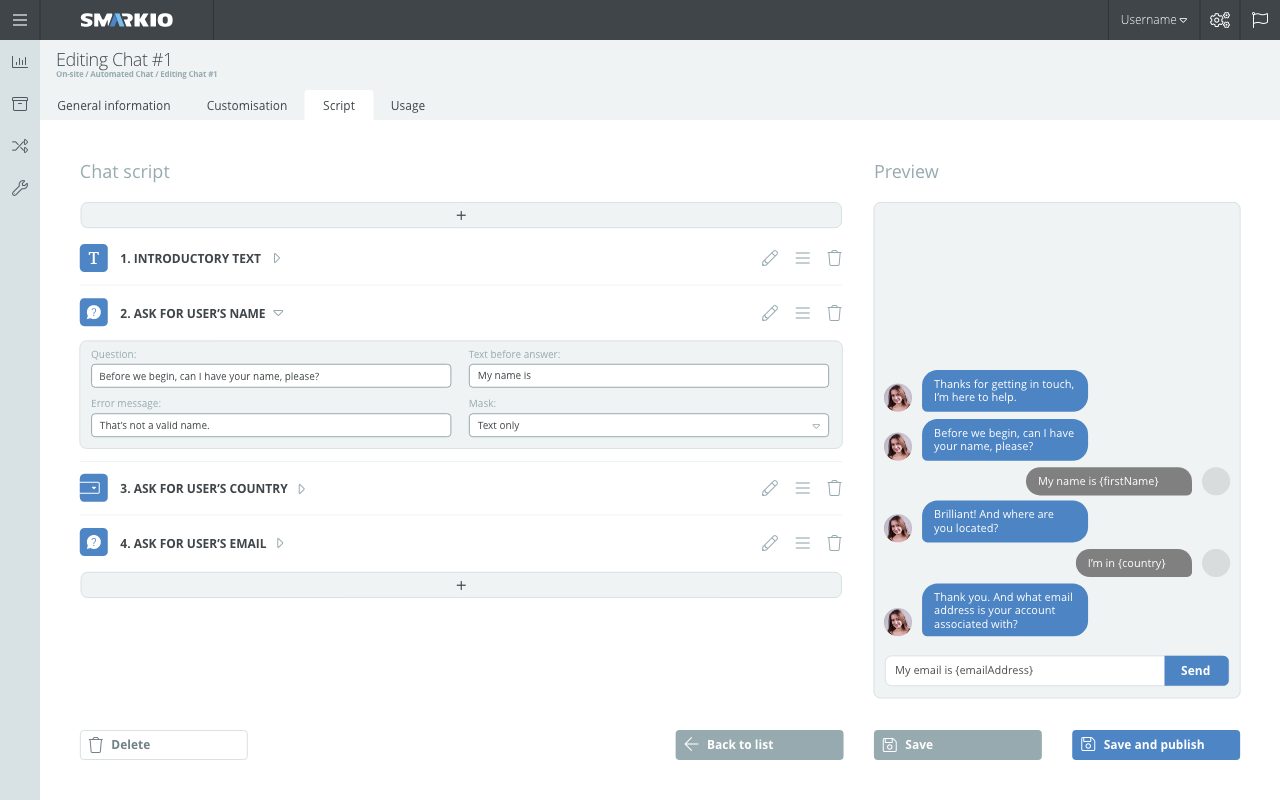
In the end, the feature was a big success. We saw many customers adopt it as an alternative to lead conversion forms, and also a fair share of more creative uses (like as the first line of support to route serious issues to human support, or to collect feedback after an event).
Value added:
Room for improvement: